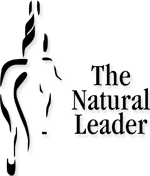 Are you a thought note person? I certainly am. When a thought strikes me as interesting I am prone to capture it. When I write these things down everything is perfectly clear as my internal editor is filling in the blanks where words of explanation should be.
Are you a thought note person? I certainly am. When a thought strikes me as interesting I am prone to capture it. When I write these things down everything is perfectly clear as my internal editor is filling in the blanks where words of explanation should be.
The problem is, I often don’t review those notes until some days or weeks later and the intention or meaning of the words may have all but disappeared. Without the context or intention behind the words, or perhaps it is simply the cryptic way I captured the thought, I sometimes have no clue as to why I wrote it down.
Our internal editor often causes us to skip the most basic of information, assuming we will simply fill that in later. Unfortunately it is the basics that the idea is built on and without that our thought lies incomplete, words on the page or just as likely in the notepad on our digital device.
To my surprise I realize I often execute tasks in the same way. Whether it is communication, projects or how I interact with others I can leave out key pieces of information that completes my expectation to ensure the success of others.
Actions than rang true for me with one of last years colts. Starting Gabriel last fall went really well. Typically I get a colt to a point and then let them mature on that over the winter months picking things up again in the spring. Well this spring we discovered a small hole that had become a gaping disaster when Gabe turned his back end into the carraganna hedge. A branch must have tickled him up under the flank turning my angel into a rank, bucking bronco an effort that would have made any Stampede cowboy proud. Fortunately for me, it was before I got on. An oversight I would not have been able to ride out.
We never want to put ourselves into a situation where we have to ride out a bad event, the problem is we rarely know when it is about to happen. It has now taken me twice as long to get Gabe back and riding to where we should have been from the start in the spring. Time well spent as for me it has been an invaluable lesson – never skip on the basics, never assume someone else really understands your expectation and remember to complete the thought.
When we turn our internal editor off it is so much easier to hear what you are saying, listen to the questions and watch for what others need. These three simple steps help us anticipate when a blank needs to be filled.
If you view it as an opportunity to start over – you always have another chance to complete a thought and make a good first impression.
Thanks to Steve Giddy for this photo




 “Make the right thing easy.”
“Make the right thing easy.”  I don’t know how many times I have gone out to work with a horse with an agenda – only to find the horse has little interest, certainly no intention and is quite content to just see what shows up.
I don’t know how many times I have gone out to work with a horse with an agenda – only to find the horse has little interest, certainly no intention and is quite content to just see what shows up. Ever had one of those tangible moments when you actually believe, that others believe in you?
Ever had one of those tangible moments when you actually believe, that others believe in you? “Horses are only afraid of two things, things that move and things that don’t.” wisdom imparted by Tom Dorrance when asked why horses are afraid of everything. Good horsemen are great at simplifying ideas, a horse fears what he might see, hear or feel. Whether it moves or not, what a horse perceives as scary, is tangible.
“Horses are only afraid of two things, things that move and things that don’t.” wisdom imparted by Tom Dorrance when asked why horses are afraid of everything. Good horsemen are great at simplifying ideas, a horse fears what he might see, hear or feel. Whether it moves or not, what a horse perceives as scary, is tangible. The Awareness Wheel is a tool we use to help people through a perceived fear of horses, injury or failure1. The wheel provides a guide to question the source of the emotion we feel welling up, to take stock of the moment and determine whether our emotions are working for us… or against us.
The Awareness Wheel is a tool we use to help people through a perceived fear of horses, injury or failure1. The wheel provides a guide to question the source of the emotion we feel welling up, to take stock of the moment and determine whether our emotions are working for us… or against us.